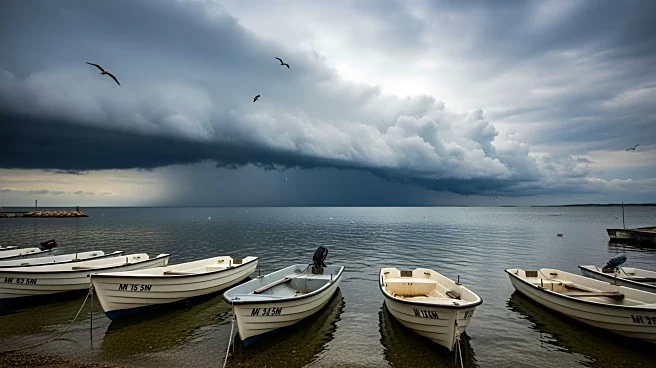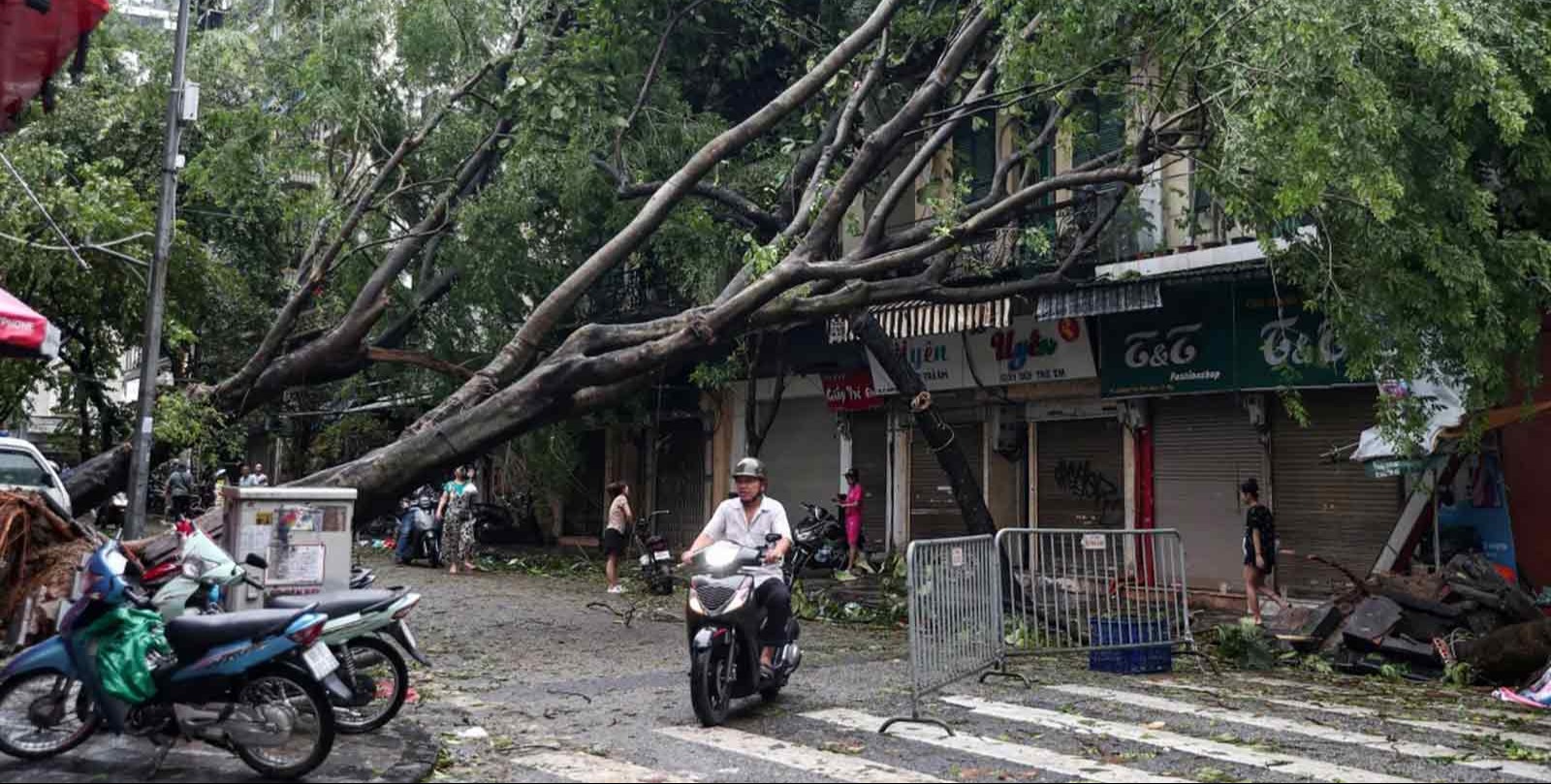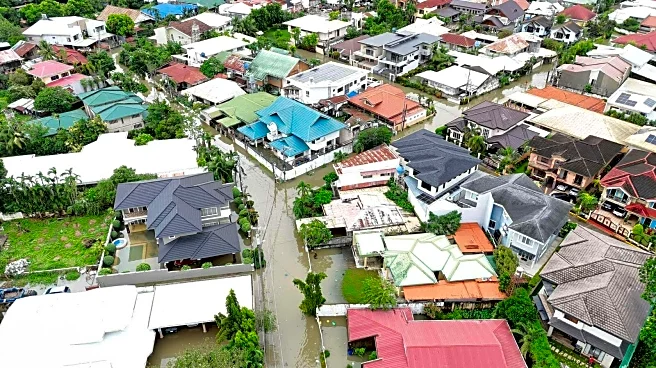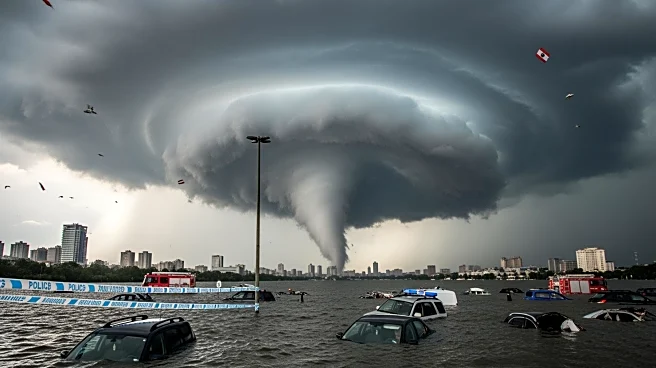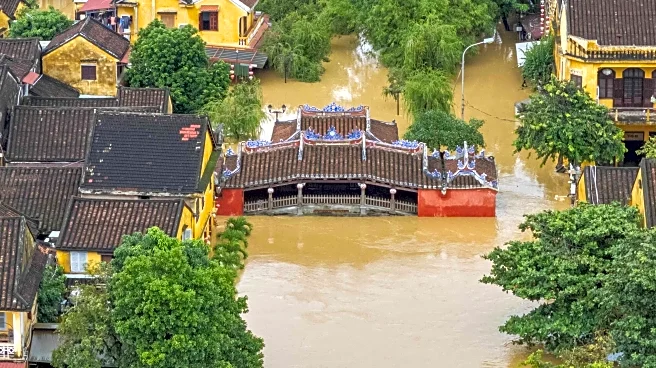What's Happening?
Philippine authorities have ordered the evacuation of tens of thousands of residents in the east-central region as Typhoon Kalmaegi approaches from the Pacific. The storm, with sustained winds of up to 120
kilometers per hour, is expected to bring torrential rains and storm surges up to 3 meters high. Evacuation orders have been issued for coastal towns, with residents moving to safer grounds and sturdy buildings. The region is still recovering from a recent earthquake, adding to the urgency of the evacuation efforts.
Why It's Important?
The Philippines is one of the most disaster-prone countries, frequently hit by typhoons, earthquakes, and volcanic eruptions. The evacuation efforts underscore the government's commitment to disaster preparedness and risk reduction. The potential impact of Typhoon Kalmaegi on infrastructure and communities could be severe, with significant implications for public safety and economic stability. The proactive measures taken by authorities aim to minimize casualties and damage, reflecting lessons learned from past disasters like Typhoon Haiyan.
What's Next?
As Typhoon Kalmaegi makes landfall, the focus will shift to emergency response and relief efforts. Authorities are likely to deploy resources to assist affected communities, with international aid potentially playing a role in recovery efforts. The situation may prompt further investments in disaster resilience and infrastructure improvements to better withstand future events.
Beyond the Headlines
The recurring natural disasters in the Philippines highlight the need for comprehensive climate adaptation strategies. Long-term investments in community resilience and sustainable development could mitigate the impact of future storms, safeguarding both lives and economic interests. The situation also emphasizes the importance of international cooperation in addressing climate-related challenges.
